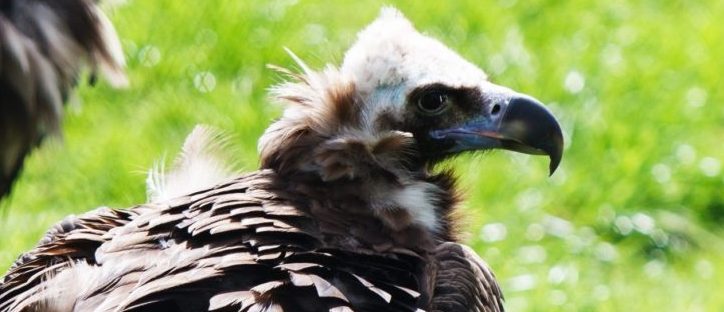The hooded vultures (Necrosyrtes monachus) are a native of sub-Saharan Africa and found mainly northwest and southern Africa. They play an important role in savannah ecosystem by feeding on dead animals, cleaning up the environment, aiding decomposition and controlling the spread of diseases.
According to IUCN, the hooded vultures are in steep decline and now considered critically endangered species. In The Gambia, the hooded vultures are traditionally seen as disgusting, filthy and associated sorcery due its look and feeding habit. Major threats to the species include deliberate killing for rituals, poisoning as result of bait intended for mammal predators and loss of habitat and nesting trees (Jallow et al. 2016).
Unlike in north-east of the country, the hooded vultures are relatively abundant south bank coastline of the Gambia, the probably due to presence of nesting trees and dead fish. The north-east is increasing affected by desertification which is believed to be contributing factor of species decline there. Other factors include land use and land conversion, reduction of rubbish dumping, improvements to abattoir hygiene and destruction of nesting tree species notably the Mahoganies (B. Bargain in litt. 2016).
Using combination approach such citizen science and adaptive management based on the “open standards for practices of conservation” this study intends to:
- Investigate the association of habitat loss, land use change and land conversion to the declining of species, comparing population distribution of species in north-east and south of the country. This task will be performed employing the techniques such as habitat connectivity, network analysis, landscape analysis, disturbance Index, vulnerability analysis.
- Investigate the competition with other species for survival
- Carry out systematic surveys throughout the species’ range to acquire a more accurate population estimate and monitor trends in the country.
- Raise awareness of the species’ plight through citizen science reduce impact killing, poisoning and other human pressures
- Build the local expertise to monitor these species and implement a sound strategy for their effective safeguarding
- Monitor rates of land-use change across its range and its effects on species reproduction, destruction of breeding grounds.
- Contribute in the documentation of species and public access to data of the species through online repository, story mapping using GIS.
- To influence policies geared towards protecting the species, through regulating and enforce measures to prosecute those involved in illegal killing vulture species.
- Manage protected and breeding sites;
- Support local initiatives to conserve vulture populations
Scope
The geographical scope of the project 47 Km coastline of the Gambia with up to 15 KM inland and dry land areas of the north-east region of the Gambia from Fass to No-Kunda. Bao Bolong Wetland reserve near No-Kunda could serve as site for species reintroduction and compare this naturally existing species of hooded vultures in Tanji Bird Reserve in south as control. Contact: ebrima.dem@ecosoln.com

